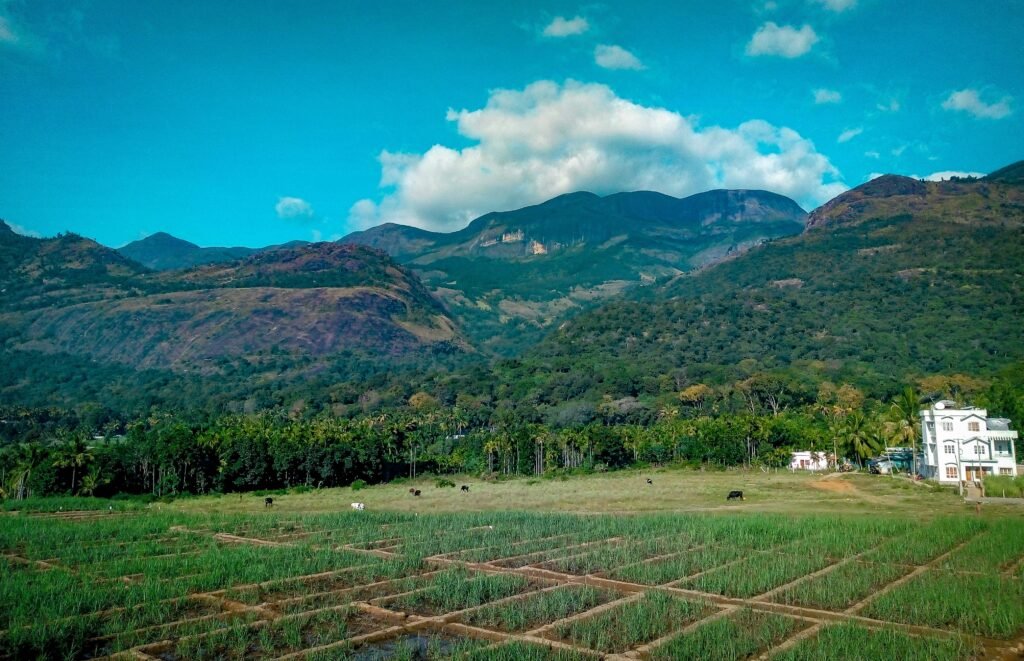🌱 Introduction
Organic farming in India is no longer limited to big landowners or high-tech farms. In 2025, even small farmers with low investment can switch to organic farming and earn better profits using traditional methods, natural inputs, and government support.
This blog shares step-by-step guidance on how to start organic farming on a small budget in 2025, especially for beginners and small-scale farmers.
✅ Why Choose Organic Farming in 2025?
Higher profit margins from chemical-free produce
Reduced input costs using locally available resources
Rising consumer demand for organic vegetables, fruits, and grains
Subsidies from government under schemes like PKVY and BPKP

✅ Step-by-Step Guide to Start Organic Farming on a Budget
🧑🌾 1. Start Small: Use Your Existing Land
Convert a small portion of your land (0.5–1 acre) to organic farming.
Avoid large investment upfront—focus on one or two crops.
✅ Tip: Choose crops like tomato, spinach, okra, onion, or coriander, which have quick returns and high demand in local markets.


🌿 2. Use Natural, Low-Cost Inputs
Replace chemical fertilizers with Jeevamrut, Beejamrut, and Panchagavya—made from cow dung, urine, jaggery, and gram flour.
Create compost from crop waste, kitchen waste, and green manure.
✅ Cost Saving: Input cost reduced by 60–80%.
🚿 3. Adopt Water-Saving Techniques
Use mulching, drip irrigation (with government subsidy), or rainwater harvesting.
Apply water only near the root zone to reduce wastage.
✅ Budget Tip: Create a simple low-cost drip system using plastic bottles or pipes.


🐄 4. Use Livestock and Cow-Based Resources
Indigenous (desi) cows are central to low-budget organic farming.
Cow dung and urine are free inputs for fertilizers and pesticides.
✅ Extra Benefit: Sell compost or cow-based inputs in local markets for side income.
🧾 5. Apply for Government Subsidies & Support
Government schemes for small farmers in 2025 include:
| Scheme | Benefit |
|---|---|
| PKVY (Paramparagat Krishi Vikas Yojana) | ₹20,000/ha support for inputs & certification |
| BPKP (Bharatiya Prakritik Krishi Paddhati) | Support for natural farming and FPO formation |
| State Organic Missions | State-level assistance for seeds, training, and market linkage |
✅ Where to Apply: Visit nearest Krishi Vigyan Kendra (KVK) or CSC center.
📱 6. Use Free & Low-Cost Farming Apps
Kisan Suvidha, AgriApp, eNAM, CropIn help with:
Weather alerts
Market rates
Crop disease advice
Selling produce online
✅ These tools can reduce dependency on middlemen and increase profits.

💡 Budget-Friendly Organic Inputs You Can Make at Home
| Input | Ingredients | Purpose |
|---|---|---|
| Jeevamrut | Cow dung, urine, jaggery, besan | Soil fertility & microbes |
| Neem Spray | Neem leaves, water | Natural pest repellent |
| Compost | Dry leaves, kitchen waste | Organic manure |
| Dashparni Ark | 10 plant leaves mix + cow urine | Insect control |
✅ Profitable Organic Crops for Small Farmers in 2025
| Crop | Reason to Grow |
|---|---|
| Spinach | Fast harvest, daily local demand |
| Tomato | High ROI in organic market |
| Moringa | High-value export and health trend |
| Coriander | Easy to grow, sells in bunches |
| Turmeric | Demand in domestic & global markets |
📝 Conclusion
Starting organic farming on a small budget in 2025 is 100% possible if you follow the right strategy:
Begin with a small plot
Use free or homemade inputs
Tap into government schemes
Choose quick-return crops
Use mobile apps and digital tools
With commitment and smart planning, you can farm chemical-free, save money, and earn better profits, even without big investment.
